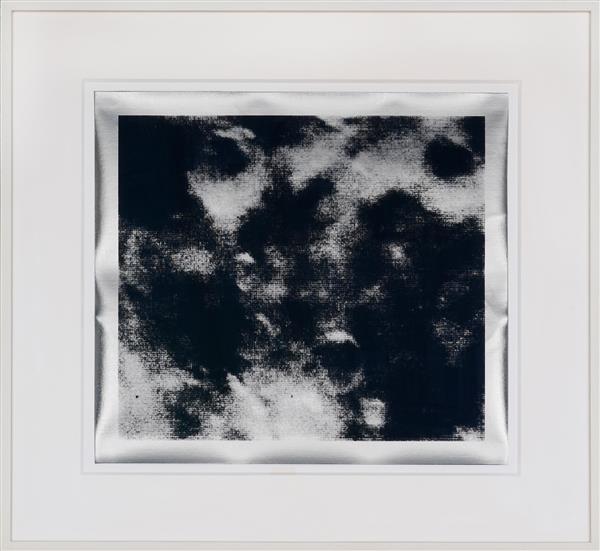pottery, drawing, singing, chess
Andreas Fogarasi
screen-print
edition 1/2
205 × 285 cm
2007
Acquisition 2010
Inv. No. 0208
pottery, drawing, singing, chess: the intertitle in white Baskerville – a classic serif typeface – against a black ground is followed by a film sequence showing men moving a bright orange folding screen in the Óbuda Cultural Center in Budapest. It is a scene from the six-part one-channel video installation Kultur und Freizeit [Culture and Leisure], for which Andreas Fogarasi was awarded the Golden Lion for the best national pavilion – that of Hungary – at the Venice Biennale in 2007.
The presentation of this prestigious prize was the acme of a breathless career that catapulted the artist, then only thirty years old, to a top position in the international art ranking. Yet this was not achieved with glittering glamour, but with a profound study on Budapest’s cultural centers, a sober-minded montage of image, sound, and text screened via six separate peepshow boxes, which forced the spectator to take a concentrated, almost scientific archeological look.
The camera placidly scans theater auditoriums, cinemas, dance studios, and classrooms, tracking down nineteenth-century workers’ clubs, which saw a revival in Socialist Budapest during the 1950s. Beyond his clinical documentation of urban space, Fogarasi keeps an eye on the complex social network that lies behind the façades; after all, these cultural institutions stand for a policy that once organized leisure activities collectively in public space and intended to control and supervise education and culture. On the other hand, these facilities used to provide shelter to potential counter-cultures and avant-gardes.
The monumental screen print pottery, drawing, singing, chess is one of the title cards that have been incorporated into the film’s “plot.” The intertitles make reference to historically relevant data and functions related to the institutions shown in the film and offer scant information about events and activities that have taken place. What in silent movies serves as a means to explain the plot and transmit the dialogues is used by Fogarasi as an element that is rather structural than explanatory. The work’s dimensions correspond to those of the video projection screen. Removed from the context of the film, the lapidary enumeration invites individual interpretations.
Brigitte Huck, 2011 (translation: Wolfgang Astelbauer)
Continue readingExhibitions
Wallpaper #3, evn sammlung, Maria Enzersdorf, 2019
Publications
evn collection. 2006–2011, Cologne 2011, p. 240 f
Andreas Fogarasi. Kultur und Freizeit [Hungarian Pavilion, Giardini di Castello, Venice], Cologne 2007, p. 102

